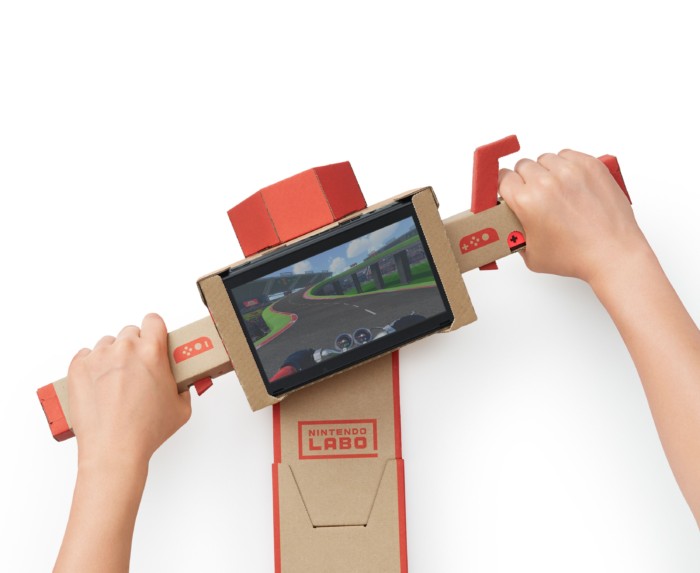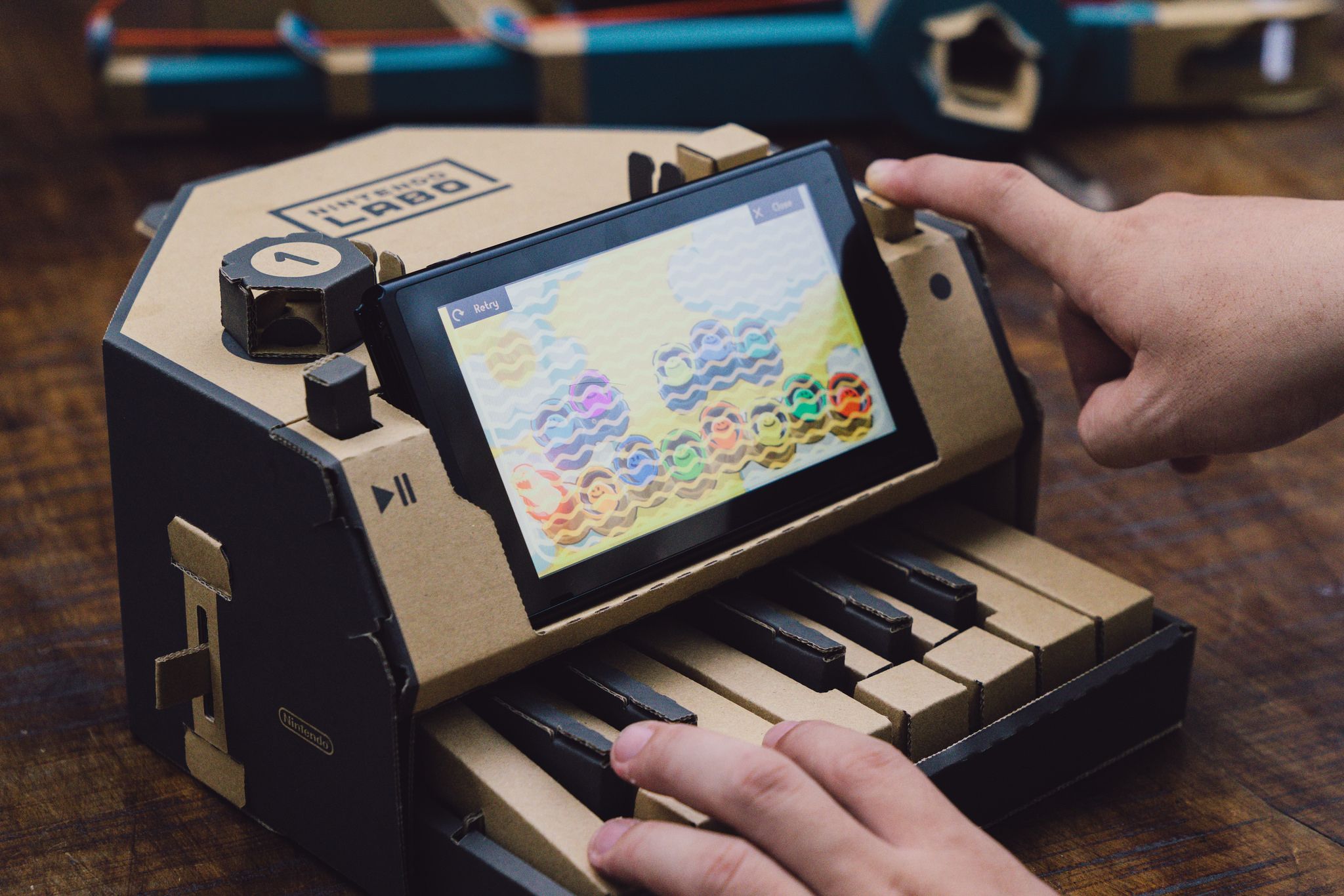Is Nintendo Labo worth our two cents?
In a time when gaming companies are pursuing the most advanced and impressive software they can, Nintendo’s newest innovation is… cardboard. Nintendo Labo may seem like a huge gimmick – after all, how could a bunch of cardboard sculptures be anything else? What it is, however, is a load of fun, and although I don’t know what sort of future it is really going to have, Switch players could do a lot worse than picking it up.
Labo currently comes in two different kits – the Variety Pack, and a Robot Kit that lets you step into the shoes of a giant robot for what looks to be some kind of adventure game. I am only fortunate enough to have the Variety Pack, so that’s what we’ll be reviewing.
A lot of the fun of Labo is, in fact, in the building
The somewhat heavy box Labo arrives in contains a game and many scored sheets of cardboard, as well as a few other components like stickers and bits of string. You have the pieces to build a piano, a motorbike, a fishing rod, an RC car and a house (Nintendo calls these ‘Toy-Cons’), and you need to put the time into building these things before you can really make use of the game. A lot of the fun of Labo is, in fact, in the building, with the game providing you with tons of instructions. The instructions even feel fun, in a classic Nintendo manner. It’s worth noting that not all of the construction elements are massively fun – when building the piano, for example, producing 13 identical keys is a bit tedious.
You may be worried about the durability of the cardboard – I certainly was when I opened the box and saw the pieces. When you’ve actually built the Toy-Cons, it’s a weird feeling to use them. They don’t feel solid, like you’d imagine a controller should, but they are very durable – there’s no feeling that you’re going to rip or damage them when you play.

Image: Nintendo, IGDB
When the Toy-Cons are done, each one can be used in relation to a mini-game. The motorbike is a fairly obvious one, which uses the Switch’s motion controls, but there’s not very much to it (despite a fun mode where you can build your own tracks). There’s a similar lack of staying power with the house game – you try to earn food and items for a pet by playing minigames. They’re fun, but they’re also quite short, and the replay value is fairly limited.
It’s the piano and the fishing rod that are the highlights of the Labo – both of them feel really realistic. The piano is what it says on the tin – there’s no real gameplay objective as such. You can play tunes (you have 13 keys and a studio mode that lets you toggle between five octaves), and record your own, and it’s perfect for young budding musicians. The fishing rod really captures the feeling of fishing – using the Switch vertically, you can adjust your reel with the motion controls and angle for a bite, with an elastic band-powered axle simulating the resistance of a fishing line once you’ve hooked something. It’s surprisingly effective, and the best of the games.
The Labo Variety Pack doesn’t really have masses of replay value, but the fact that the game is Toy-Con 01 suggests that we may have more Labo on the way
The Labo Variety Pack doesn’t really have masses of replay value, but the fact that the game is Toy-Con 01 suggests that we may have more Labo on the way – I certainly wouldn’t be disappointed with that. To focus on the limited games would be to ignore the true pleasure of Labo – the construction of the various Toy-Cons (with the spectre of coming up with your own creations being encouraged from the get-go). Nintendo has delivered something incredibly unique with Labo, and the question now is whether it will be something they build on, or whether these cardboard creations will remain the one-off gimmick everyone feared they would be.

Comments